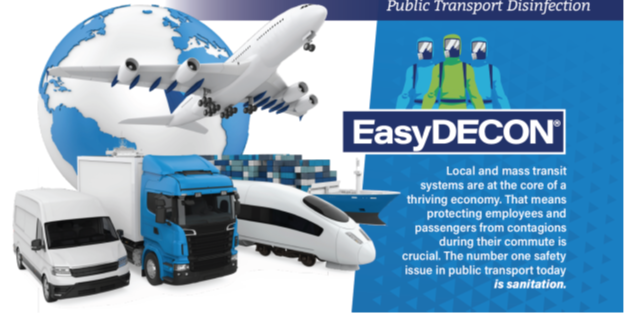Making the world a safer place
The last 18 months of the COVID-19 pandemic have proven to be a particularly bumpy ride for not only parents and kids, but school bus and transportation drivers as well. Keeping kids safe has always been the top priority of student transportation professionals. Now, as kids transition out of virtual school back to in-person learning, there’s yet another hurdle to tackle: keeping school bus interiors safe, disinfected, and operational. That not only results in the protection of kids, but of our drivers as well.
The Driver Shortage
Masking and spacing regulations still apply on busses. The state requires one or the other, but most school districts require both. The process becomes even more tricky when having to transport kids who have a medical reason not to wear a mask.
A significant portion of current school bus drivers are in an age group that’s at a higher risk for contracting COVID-19, and we are still without a vaccine for children under 12, the potential risk of infection for drivers is very high and just isn’t worth it for many. Consequently, school districts around the country are now scrambling to find help. The situation is so dire, that in Massachusetts the government is deploying the National Guard to transport kids to school. This won’t be sustainable for very long and the buses still need to be properly cleaned and disinfected before and after every service.
It’s Time to Rethink Disinfection Methods
It may well be time to rethink before reaching for bleach to disinfect interior surfaces. Bleach isn’t recommended for use on school buses for a variety of reasons. Liquid bleach fumes release harmful airborne particles that can cause lung irritation, and can also exacerbate conditions suffered by students with disabilities. All in all, a recipe for disaster.
We’re all on a learning curve when it comes to disinfection, which means we need to go back to the drawing board to find better ways to mitigate risk and to ensure quality of service for not only students but bus drivers as well. That all starts with proper disinfection.
Get On Board With Real Disinfection Methods
Using an EPA-approved disinfectant like the EasyDECON® is the best defense available. EasyDECON® has a 99.99999% efficacy in killing the most resistant viruses, bacteria, and pathogens lurking on school busses, including COVID-19.
To illustrate its power, school districts in Canada that use EasyDECON® have remained open throughout the pandemic. They have been able to do so by fogging their facilities and school buses after every ride. They have even drastically reduced cases of cold and flu viruses among students and staff. Talk about a win-win.
Check out the following video on how to Disinfect Your School Buses using the Intelagard process with a sprayer and fogger. On average, an individual fogging with EasyDECON® can effectively clean and disinfect a school bus within 30 seconds while using only nine ounces of product.
Now compare it to the labor-intensive method another US school district[SS1] uses with a different disinfectant. School Bus Cleaning Demonstration.
The cleaning process forces them to apply disinfectant to every high touch area, up close and personal, and the results are completely reliant upon the user applying the disinfectant.
The Results Are In. EasyDECON® Wins.
If methods like those demonstrated in the video above are commonly practiced nationwide, can you blame bus drivers for not feeling safe?
Since the EasyDECON® has an innate positive electrostatic charge, when fogged or sprayed the user doesn’t need to worry about a lack of coverage or missed areas. This formula gets the job done with precision and ease in one application. It is also effective in presence of what is referred to as a “high soil load”, a characteristic that is extremely rare/non-existent for other disinfectants. What more do you need?
Get in touch with our experts today to place an order and keep your buses running and your drivers and kids safe.



